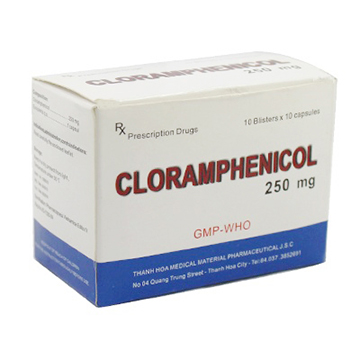| Message: | Indications:
Typhold fever and other types of systemic salmonella infections.The carrier state will not be eliminated.Bacterial meningitis due to haemophilus influenzae.Anaerobic infections originating from foci in the bowel peivis.Rickettsial diseases such as epidemic,murine,scrub and recrudescent typhus.Rocky Mountain spotted fever and Q.fever when tetracyclines are not indicated.
Brucellosis when tetracyclines are contra-indicated.
The use of chloramphenicol should be limited to serious infections where positive bacteriological evidence and clinical judgement indicates that chloramohenicol is an appropriate antibiotic.
Contra-indications:
Chloramphenicol in contra-indicated in the following conditions:
1. patients with a history of hypersensitivity or toxic reactions.
2. for minor infections or for prophylaxis.
3.aplastic anaemia.
4.during active immunisation.
Warnings:
The risk of aplastic anaemia does not restrict the use of chloramphenicol in situations in which it is necessary;however,it emphasizes that the drug should never be employed in diseases readily,safely and effectively treatable with other antimicrobial agents or in undefined cases.
The use of chloramphenicol during pregnancy is best avoided.
Repeated courses and prolonged treatment should be avoided.
Concomitant administration of chloramphenicol with other drugs liable to depress bone-marrow function should be avoided.
Chloramphenicol enhances the effects of coumarin anticoagulants,some hypoglycaemic agents (chlorpropamide and tolbutamide) and phenyto.
Dosage and Administration:
Adults:-500mg every 6 hours or 50mg/kg body mass daily in divided doses every 6 hours.
The dose of chloramphenicol should be reduced in the presence of hepatic disease or in patients with renal insufficiency.
Children:-25 to 50 every 6 hours or 50mg/kg body mass daily,given in divided doses at intervals of 6 hours.
|
 my account
my account
 log out
log out
 my account
my account
 log out
log out
